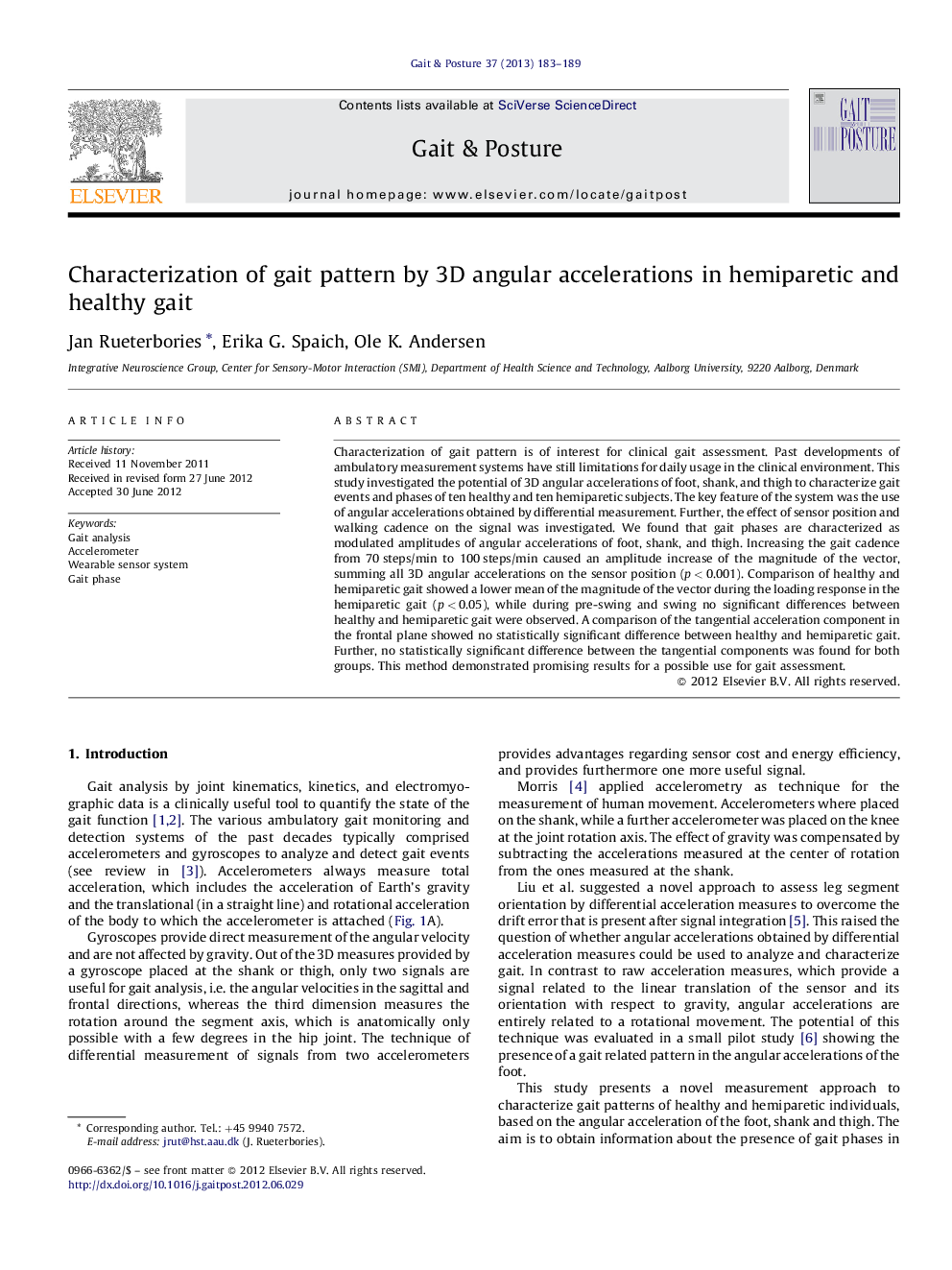| Article ID | Journal | Published Year | Pages | File Type |
|---|---|---|---|---|
| 6207913 | Gait & Posture | 2013 | 7 Pages |
Characterization of gait pattern is of interest for clinical gait assessment. Past developments of ambulatory measurement systems have still limitations for daily usage in the clinical environment. This study investigated the potential of 3D angular accelerations of foot, shank, and thigh to characterize gait events and phases of ten healthy and ten hemiparetic subjects. The key feature of the system was the use of angular accelerations obtained by differential measurement. Further, the effect of sensor position and walking cadence on the signal was investigated. We found that gait phases are characterized as modulated amplitudes of angular accelerations of foot, shank, and thigh. Increasing the gait cadence from 70 steps/min to 100 steps/min caused an amplitude increase of the magnitude of the vector, summing all 3D angular accelerations on the sensor position (p < 0.001). Comparison of healthy and hemiparetic gait showed a lower mean of the magnitude of the vector during the loading response in the hemiparetic gait (p < 0.05), while during pre-swing and swing no significant differences between healthy and hemiparetic gait were observed. A comparison of the tangential acceleration component in the frontal plane showed no statistically significant difference between healthy and hemiparetic gait. Further, no statistically significant difference between the tangential components was found for both groups. This method demonstrated promising results for a possible use for gait assessment.
